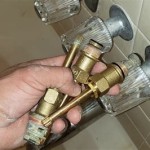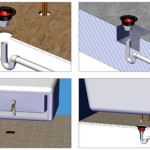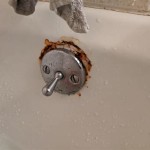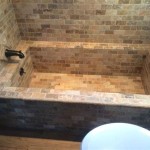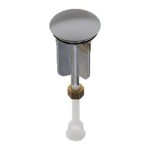Bathtub Hose Connectors: Understanding Functionality, Types, and Installation
A bathtub hose connector, often called a "bathtub spout connector" or "tub spout connector," is a crucial component in your bathroom plumbing system. This small, often overlooked part plays a critical role in connecting your bathtub faucet to the spout, allowing water to flow smoothly from the faucet to the bathtub. Without a functioning bathtub hose connector, your faucet would be useless, and you wouldn't be able to fill your bathtub or enjoy a relaxing soak.
While the basic function of a bathtub hose connector is straightforward, there are various types of connectors available, each with its unique features and benefits. The type of connector you need will depend on the specific configuration of your bathtub faucet and spout. This article delves into the world of bathtub hose connectors, exploring their functionality, different types, installation procedures, and troubleshooting tips.
Understanding the Function of a Bathtub Hose Connector
The primary function of a bathtub hose connector is to securely connect the spout to the faucet, allowing water to flow from the faucet to the bathtub. The connector is usually made of metal, plastic, or a combination of both materials, and it typically features a threaded end that screws into the faucet and another threaded end that screws into the spout. This design ensures a tight and secure connection, preventing leaks and ensuring smooth water flow.
In most cases, the bathtub hose connector is a separate component that needs to be installed after the faucet and spout are in place. However, some faucets come with integrated connectors, eliminating the need for a separate component. These integrated connectors are typically made of the same material as the faucet and are seamlessly incorporated into its design.
Types of Bathtub Hose Connectors
Bathtub hose connectors come in various shapes, sizes, and materials, each designed for specific applications. Here are some of the most common types:
1. Straight Connectors
Straight connectors are the most basic type, featuring a straight design with two threaded ends that connect directly to the faucet and spout. These connectors are suitable for most standard bathtub setups.
2. Angled Connectors
Angled connectors are designed for situations where the faucet and spout are not aligned at a straight angle. These connectors allow for a more flexible connection and ensure a smooth flow of water even when the faucet and spout are positioned at an angle.
3. Extension Connectors
Extension connectors are used when the distance between the faucet and spout is greater than the standard length of a bathtub hose. These connectors add extra length to the hose, making it possible to connect the faucet and spout even when they are far apart.
4. Slip-On Connectors
Slip-on connectors, also known as push-fit connectors, are designed for quick and easy installation. These connectors feature a spring-loaded mechanism that allows them to be easily slipped onto the faucet and spout without any threading. These connectors are ideal for DIY enthusiasts who want a simple and convenient installation process.
Installation Procedures for a Bathtub Hose Connector
Installing a bathtub hose connector is a relatively straightforward process that can be done by most DIY enthusiasts. However, it's important to have the right tools and materials before starting the installation.
Here's a step-by-step guide to installing a bathtub hose connector:
- Turn off the water supply. This is crucial to prevent flooding and ensure safety during the installation process. Locate the shut-off valve for your bathtub faucet and turn it off.
- Remove the old connector. If you're replacing an existing connector, carefully unscrew it from the faucet and spout. Use a wrench or pliers to loosen the connection, but be careful not to damage the faucet or spout.
- Prepare the new connector. Ensure that the new connector is compatible with your faucet and spout. Inspect the threads on the connector and ensure that they are clean and free of debris.
- Connect the new connector. Screw the new connector onto the faucet and spout. Apply Teflon tape to the threads for a tighter and leak-proof seal. Use a wrench or pliers to tighten the connection, but avoid overtightening, which can damage the parts.
- Turn the water supply back on. Once the connector is securely in place, carefully turn the water supply back on and check for leaks. If there are any leaks, tighten the connection further or replace the connector if necessary.
It's essential to consult a professional plumber if you are unsure about any aspect of the installation process. Professional plumbers can provide expert advice and ensure that the installation is done correctly and safely.

Kitchen Tap Connector Mixer Garden Hose Pipe Adaptor Joiner Hot Tub Er

Claber 3 4 Quick Fit Tap Connector Hardware Specialist

Home Care Bathtub Adapter Shower Kit For Handicapped Elderly Finally S Corp

Flexible Waste Trap Pipe Connector For Bathroom Basin Shower Bath Kitchen E

Kitchen Tap Connector Mixer Garden Hose Adaptor Pipe Universal Joiner Tub Faucet

Home Care Bathtub Adapter Shower Kit For Handicapped Elderly Finally S Corp

600mm Bathtub Waste Drain Flexi Hose Myhomeware

Bath Connector Universal Flexible 40mm X 600mm Bathware Direct

Through Bath Shower Hose Adapter Byretech Ltd

Plastic Soft White Pvc Bath Shower Hose With Nut Connector China And Made In Com

